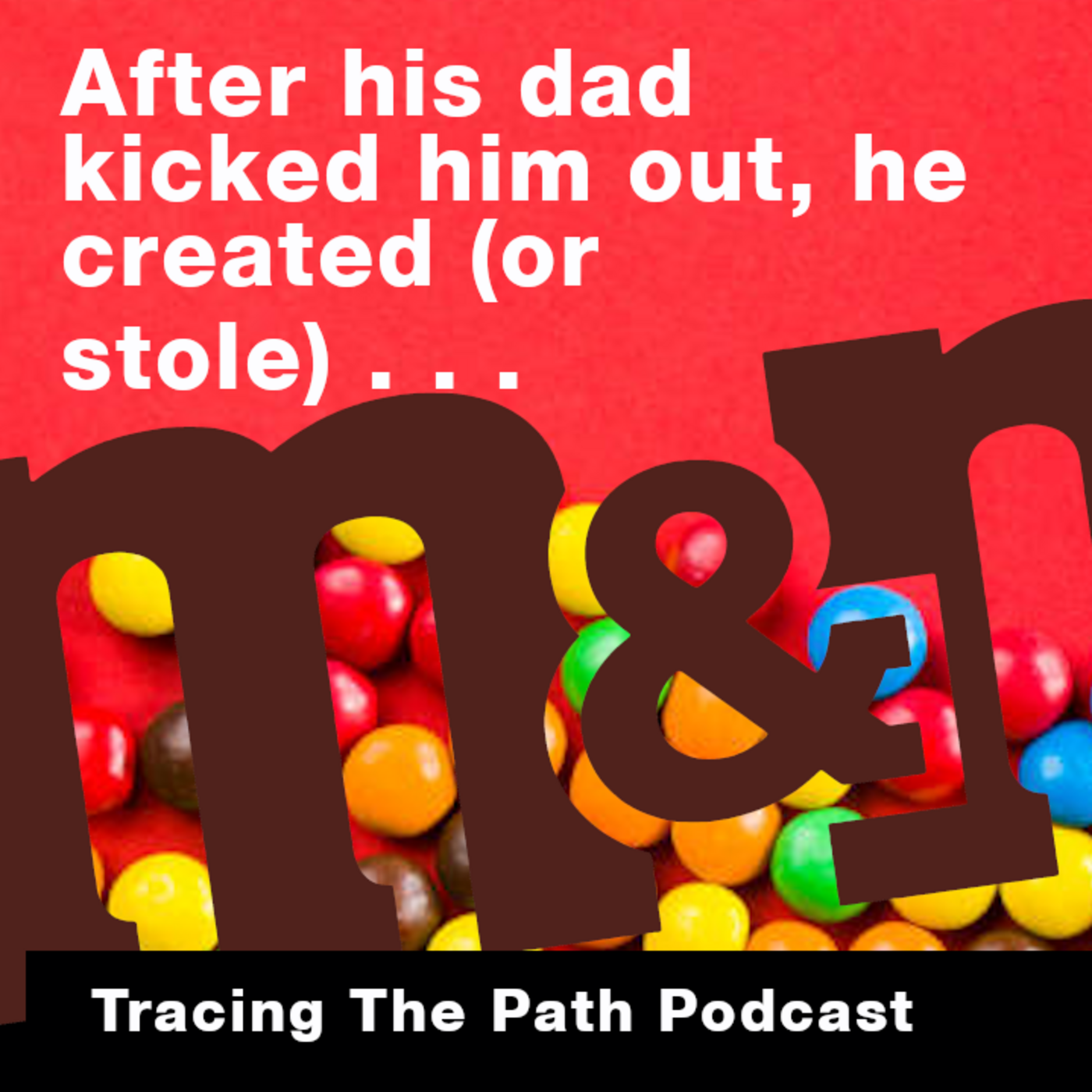
Was the Idea for M&Ms Stolen or Inspired?
This source, “M&Ms,” reveals the surprising and intricate origins of M&M’s candy, tracing its lineage from ancient sweetened treats to the modern chocolate-coated confection. It highlights how various historical innovations, like sugar-coated “com-feet” and the development of panning and dragée processes to prevent chocolate from melting, laid the groundwork for this popular candy.
The story then focuses on the rivalry between confectionary giants like Roundtree, Cadbury, Hershey, and Mars, emphasizing Forrest Mars’s pivotal role in adapting the concept of candy-coated chocolate—inspired by European “Smarties”—and launching M&M’s in the U.S., particularly through a strategic wartime partnership to overcome sugar rationing. The piece also touches on the candy’s evolution, including the introduction of peanut M&M’s and the iconic “Melt in your mouth, not in your hands” slogan, before concluding with anecdotes that demonstrate the brand’s cultural impact and Forrest Mars’s relentless entrepreneurial spirit.

Audio Hour:
If you run an activity group, classroom or “audio book club”, click here for more information on using Tracing The Path.
Throughout the episodes, every tune is somehow related to the topic. In the Twinkies episode, for instance, the discussion of the Brooklyn Tip-Tops Baseball team concludes with “Take Me Out To the Ballgame”.
How many do you recognize? And harder, how many can you name?

Was the Idea for M&Ms Stolen or Inspired?
ETA Hoffman wrote the Nutcracker and the Mouse King in 1918. You probably know it better as the ballet the Nutcracker that Pyotr Ilyich Tchaikovsky composed, the one that features the music “Dance of the Sugar Plum Fairy”. And just a few short years later in 1823, Clement Clark Moore published a poem entitled “A Visit from St. Nicholas.” It’s the one that had children snug in their beds with visions of sugar pumps dancing in their heads.
Would you believe the most popular candy in the world today comes directly from these sugar pumps? In fact, they do. And this is that story.
Our story begins in the Middle Ages, or perhaps even earlier, with the ancient Egyptians, where today’s modern candy originated. While candy, as we know it, is fairly modern, ancient civilizations still need ways to satisfy their sweet tooth.
Egyptians would combine fruits and nuts with honey.
Greeks made candied flowers with honey,
and the Chinese used sugar from cane to sweetened ginger and licorice root.
Later in the 14th century, the nations began to import sugar to make sweets. Sugar was expensive, and thus a treat was really only for the wealthy.
The Venetians would coat nuts and seeds like fennel, careway and almonds with sugar. These treats were known as com-feet. Com-feet was named after the Italian word for confetti, as guests would toss the sweet seeds over the bride at weddings.
Comfeed was considered a digestion aid and was eaten with spiced wine. When these sweet nuts and seeds were rolled into small balls like the size of plums, they were called sugar plums. Sugar plums remained popular even after chocolate became important.
Soon shops sold the nuts and seeds covered in chocolate.
John Cadbury
The shift to chocolate was evident as early as 1824 when John Cadbury opened a grocery store in Birmingham, England, where he began to sell drinking chocolate. And in 1862 a Quaker, Henry Isaac Roundtree, founded a chocolate company, and would spend the next 40 years trying to make chocolate as good as John Cadbury’s.
One of the problems with chocolate was its low melting point. It would melt from the heat of your fingers, which is how sugar plums were eaten. But that problem was overcome in 1870 when two new processes were created, panning and enrobing. Both enabled a chocolate to be covered in sugar to prevent melting.
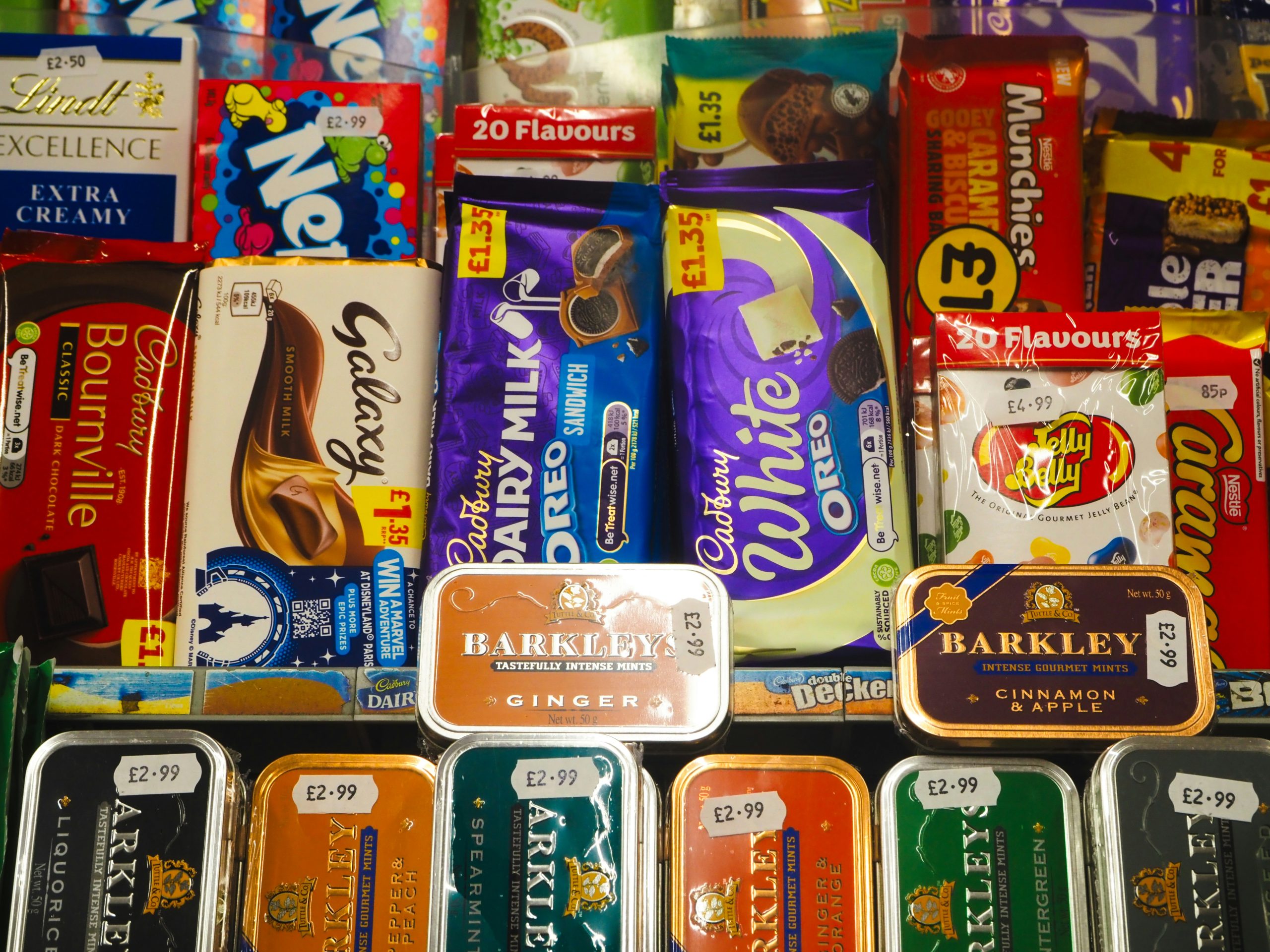
Cadbury used this technique to develop a hollow chocolate Easter egg that would be filled with sugar-coated chocolates called juggies. In 1879, a French confectioner, Claude Gage, who had perfected these processes, showed up at the Roundtree factory to see if they’d be interested in buying his fruit jelly or chocolate sugar pumps.
Henry Isaac Roundtree had no interest in that. He didn’t want them once. He thought they were so fantastic that he bought Claude’s company. Buying Claude’s company was quick to help Roundtree, as they instantly created sugar-coated chocolates they began to call chocolate beans. It took no time for them to become Roundtrees, main seller. While Roundtree and Cadbury were battling it out for the European market, Hershey and Mars were about to start competing in the U.S.
Hershey
Milton S. Hershey started in the candy business in 1873, making confections and caramels. But after visiting the 1893 Chicago World’s Fair and seeing a chocolate making machine, he sold his caramel business and started Hershey’s chocolates in Pennsylvania.
Along with his partner William Murray, Hershey would dominate the U.S. market for over 30 years. It wouldn’t be for another 18 years that a rival would arise to challenge Hershey.
In 1911, Franklin Clarence Mars would enter the scene. Frank’s love of candy began as a child in Hancock, Minnesota. Frank would spend his days helping his mom dip chocolates, and by eighteen Frank had his own business selling molasses chips. And at twenty he’d fallen in love with a woman named Ethel, got married and had a son.
But that marriage wouldn’t last even two years. Frank’s son went to live with his ex-wife’s parents in Saskatchewan. But that didn’t stop Frank from falling in love again.
In 1910, he moved all the way to Tacoma, Washington, to marry another. He and Ethel opened a candy factory selling wholesale candy to businesses. It was a living, but not very successful. Ultimately, that failed, and they moved back to Minnesota where they started the Marobar Candy Company.
Growing up in Saskatchewan, his son Forrest wasn’t raised on the love of candy. He thought mining would be a lucrative career, so in 1922 he went to the University of California Berkeley to study mining.
Forrest was a natural entrepreneur. To help pay room and board there, he took a job in the cafeteria, and wound up turning it into a business. By reorganizing the menu, to match “Meat Sale and Discount Days,” he saved the school a ton of money and earned himself a $100 a week paycheck during the school year.

Over the summer, he worked as a camel cigarette salesman.
The story goes, one time he and his sales associates were in Chicago, and they plastered every lamp, storefront, and car with camel cigarette posters, which garnered some headlines, but also landed him in jail.
It was his father, up in Minnesota, the closest to Chicago, who bailed him out, and had him working for Marobar the rest of the summer. In fact, that summer, Forrest suggested to his dad he put a chocolate malt drink into a candy bar, and the Milky Way bar was born, soon to be Frank’s most successful product.
Forest wanted more than California Berkeley could give him, so he transfered to Yale, and graduated with a degree in Industrial Engineering in 1928. Working over the summers, Forests had helped his dad’s “Marobar” company into a million-dollar venture.
And in the summer of 1930 and 1931, he helped create the Snickers and Three Musketeers candy bars.
By 1932, “Marobar” sales were 32 million. Forrest was chomping at the bit. He wanted to take over the chocolate industry in the US and in Canada, and he wanted his dad to give him one third of the business.
But his dad wasn’t quite ready or at the space for massive growth any longer, and that drove a rift between the two.
Finally, in 1932, his dad gave him $50,000 and the foreign rights to sell Milky Way in Europe. At that time, Frank Morris was thinking more about retirement than growth. Despite being in the middle of the Great Depression, he and Ethel decided to move south. They bought a house in River Forest, Illinois, just outside of Chicago.
And they bought 28 acres of land in the warmer climate of Tennessee, and spent $2 million building their Milky Way ranch. Frank also bought a Duesenburg racing car and a 16-cylinder Cadillac for Ethel.
The Milky Way ranch boasted a huge staff and employed over 800 workers and housed thoroughbred horses and Hereford cattle. Eager to outdo his dad, Forest and his wife left for Switzerland, where Forest found work at Nestle learning to make European chocolate, and then went to work for Tobelrone before finally settling in the English-speaking London.
Like his father, he set up a shop in a one-room factory. He ended up making a sweeter version of the Milky Way bar, he called Mars Bar. It quickly became a bestseller.
But his dad wouldn’t see much of his success. Frank passed away in 1934. His mother still angry with Forrest took over the business, not letting Forrest in.
1934 would prove to be a big year for most Forrest and Ethel.
With Frank’s passing, Ethel not only took on the responsibilities at Marobar, but also managed to Tennessee Ranch.
And Forrest’s European company was taking a new turn. He came across a company that was canning meat for dogs, named Chappies. He liked the idea so much he bought the company. And also, he had built a relationship with a scientist, Erich Husenlaub.
Eric had invented a new way to parboil rice that maintained more of its nutrients, cooked faster, and was impervious to weevils. They called it “converted rice” and knew it would be very profitable. Forrests was excited to see where this relationship would go.
Roundtree
That brings us back to Roundtree. By 1930, Roundtree had spent 50 years chasing Cadbury, when a consultant they’d hired from Canada came on board. Educated in the US, George Harris had completely new ideas for round 3.
To start, he didn’t understand why they’d named all their chocolates after the royals, like the King’s chocolate. And suggested they rename, retool and start selling products that were sitting around as just ideas.
From that, Roundtree introduced three new candies to the market, an aerated chocolate bar, they called “Aero”, A wafer chocolate bar they named KitKat, and they took their chocolate beans product, started producing them in different colors and named them Smarties.
And this is where our story comes together.
Forrests company was now much bigger than just a candy manufacturer and the brands would keep coming. Chappie Pet products was growing incredibly. His candy company added a new product called Malteesers, but it was the impending Spanish Civil War that would change his business forever.
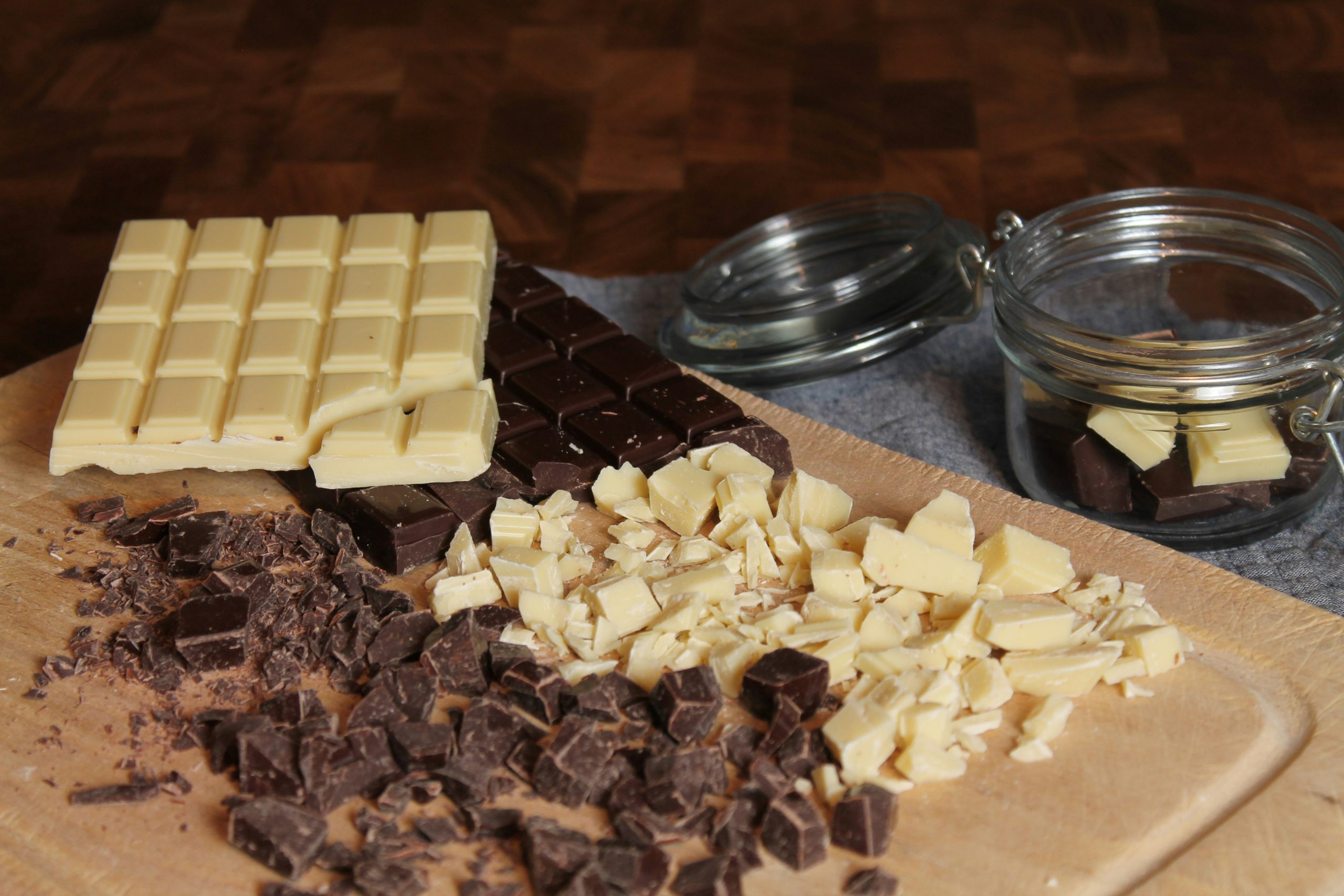
In 1936, a planned coup against the Spanish government erupted overnight. The rebels who were funded and supported by Mussolini and Hitler, and surprisingly, the CEO of Texaco, and the existing government was financially supported and bolstered by the Soviets.
For a short period, the world was transfixed on this global fight, taking place in a few hundred square miles of the planet. Famous writers from all over the world went there to report on it. George Orwell, Ernest Hemingway, Pablo Neruda, Langston Hughes, and the author of the Little Prince Antoine de Saint-Exupéry. And even Pablo Picasso painted Guernica from there.
Being so close, Forest Mars was intrigued and went to Spain to see the going’s on. That’s when it happened. Forest saw Spanish soldiers eating these candy-coated smarties from RoundTree. What started out as a sugar-coated nuts and seeds product called sugar pumps involved into hard sugar candy coated chocolate.
The candy helped make sure the chocolate didn’t melt.
And they were sold in small cylindrical cardboard tubes, easy to manufacture, easy to ship, and for the troops, easy to carry when the chocolate wouldn’t melt. That idea stuck with him.
He and his scientist, Eric, had teamed up with a Texas businessman to start creating this new rice in the US. So in 1939, Forrest went to the US to start Food Manufacturers Inc. Their business would be rice, candy, and pet food.
His first order of business was his candy-coated chocolates. With Roundtree being in Europe, he just needed to patent the process of making them in the US before Roundtree did. It wasn’t until 1941, two years later that he actually received the patent on that tube and the process.
By that time, War War II was underway in Europe. One of the first things the US government did as part of the war effort was to create rationing, and they started with sugar, leaving food manufacturers in a lurch. The one company that wasn’t really subject to rationing was Hershey’s.
Hershey’s
They were making a chocolate bar for the soldiers’ MREs and had the government’s favor. So with patent in hand, Forrest Mars, the son of Frank Mars, reached out to Bruce Murray, the son of Hershey’s president, William Murray. Bruce, like Forrest, disagreed with how her show was run.
He wanted to expand faster and father and was frustrated by being held back. When Bruce told his dad William Murray about the Forrest proposal, William Murray felt the deal with Forrest would probably make the money. So he encouraged Bruce to go chase that.
Forrest and Bruce made a deal in order to get the chocolate he needed during rationing. Forrest and Bruce would create a new company, Mars and Murray limited, where Bruce would get a 20% stake in the company. And the candy they would produce would be named after the new Mars and Murray partnership. They would be called M and M’s.
So to not raise flags about their use of sugar, Bruce would help them get government contracts to provide M and M’s to the war effort. While Hershey had the MRE contract, M&Ms were included in c-rations, and the Red Cross packaged M&Ms had cleared cellophane wrap with the Red Cross logo. And M&Ms were also sold in post-exchanges and ship service stores.
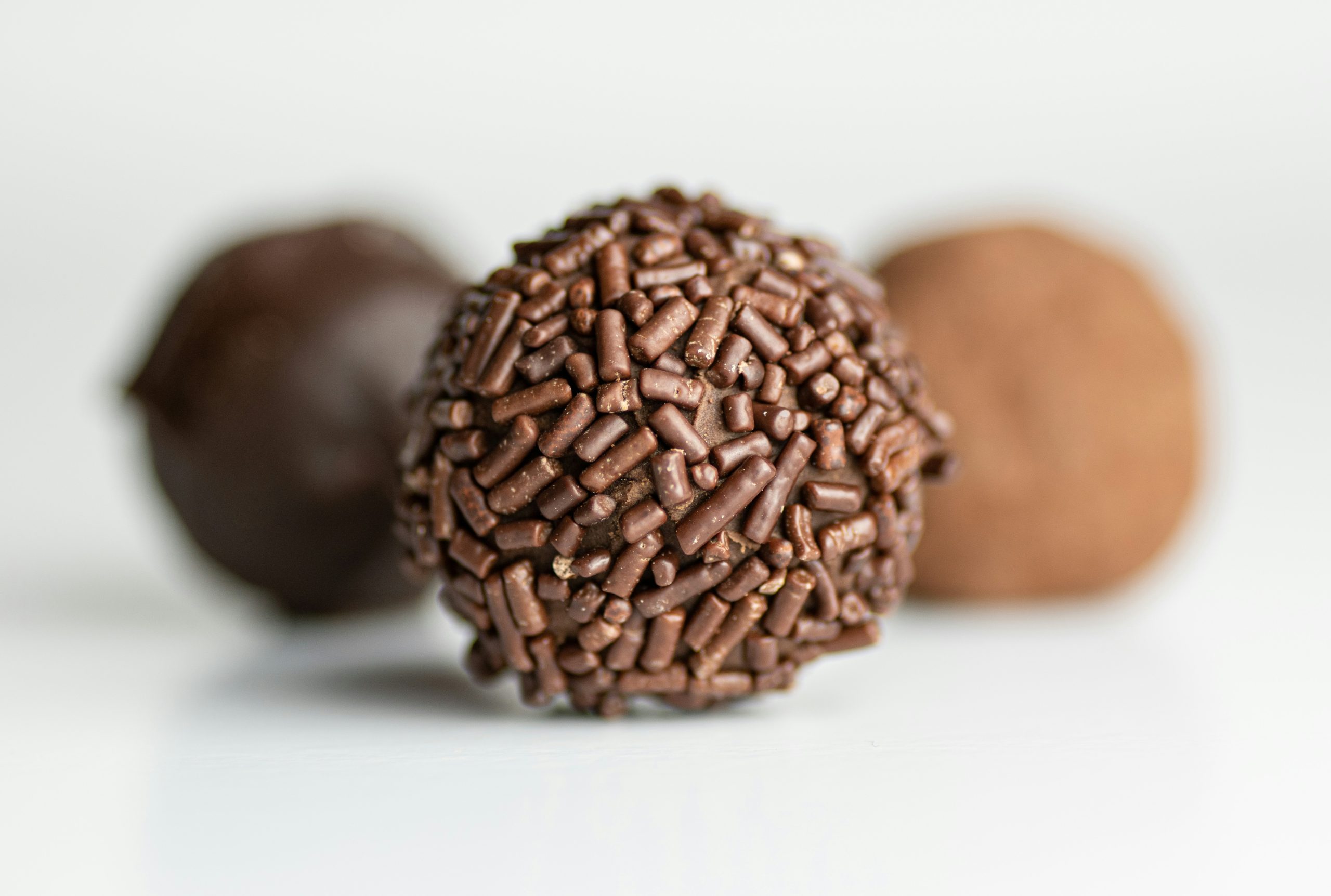
In fact, every M&M was sold to the government for the war effort. And while M&Ms were being cranked out for the government, in 1942 their Houston-based rice company started selling their new product, Uncle Ben’s Converted Rice, to consumers and to the government.
Once the war was over, it was time for forest Mars to focus on the end consumer. He had to bring M&M’s to the general public, a product that returning soldiers already loved. By 1950, Mars introduced the brown bag that M&M still come in today and started stamping each piece of candy with a lowercase M.
Not only that, but to make a big splash, he hired a big city copywriter to help with the marketing.
Together, he and the copywriter came up with, “Melts in your mouth, not in your hands.” A phrase “Forrest” had been using to describe the benefit of his product for a long time.
And no longer needing to be in business with Bruce Murray, Forrest decided to get out of that deal. For over a year he yelled, berated and humiliated Bruce at every turn until Bruce just wanted out. He wanted out so badly he agreed to a $1 million payout on a billion dollar company, effectively getting only 10% for his 20% ownership.
His father William Murray was so angry at Bruce for giving Mars this big boost in the marketplace. Bruce Murray was never allowed to work at Hershey again. For Mars, their new production needs grew so large, they opened a second plant for making M&Ms.
This one, 1500 miles away from their New Jersey location, in Cleveland, Tennessee. Right next door to Dayton, Tennessee, home of the Scopes trial.
And with this new capacity Mars had a new idea. M&Ms originated from sugar-covered nuts and seeds. Why not go back to that? So in 1954, Peanut M&Ms entered the market, giving M&Ms a new name, plain M&Ms. Roundtree’s Smarties were always at the back of Forrest’s mind.
Forrest knew his M&Ms would be discovered in Europe by Roundtree during the war, potentially inciting him to try the US market afterwards. But sugar rationing during the war shut down the Smarries operation, making M&Ms the only candy-coated chocolate in Europe during the war. He knew that was just temporary, though, as as soon as the war was over, Roundtree would be quick to gain their market share back, and still potentially come to the United States.
Mondelez, one of Roundtree’s biggest competitors in Europe, saw an opportunity to create a new product. They called Forrest to see if he would collaborate on this new product that Mondelez was planning to call M, also using a lowercase M.
Forrest agreed. Another candy manufacturer in Europe, Edward Dee, left the UK in 1949 for the US and ended up in New Jersey. Having made compressed fizzle candies in the UK, he bought two pellet machines and started making a new candy they called Smarties in the US.
The name had been successful in Europe and no one was using it here. Their success in the US couldn’t have come sooner for Mars, knowing Roundtree could enter the US market at any day. And with the new pellet Smarties becoming popular, Roundtree had a new speed bump.
Mars would encounter other problems over the years, but he was always able to respond swiftly.
In 1976, an erroneous health study in Russia made a connection between red dye number 2 and cancer, and the world went a little crazy. The FDA banned Red dye #2 and suddenly hot dogs, ice cream, pet foods, and more were yanked from store shelves.
Mars didn’t use Red dye #2, but immediately cut Red M&Ms, so as not to get swept under the rug with the rest.
And in 2020, the George Floyd incident made every company relook at the social injustices around their brands. Mars didn’t hesitate. Knowing their Uncle Ben’s brand had racial origins, they changed the name immediately to Ben’s original.
That reminds me, remember back in 1934 when Forrest bought the chappy canned meat for dogs company? Well in 1971 they changed the name to Pedigree and are now the largest pet food company in the world alongside Nestle Purina.
And if you listen to the Twinkie episode of Tracing the Path, you can learn more about that.
In 1964, Mars absorbed his dad’s Marobar Company. And now today, it’s one of the biggest companies in the world.
Mars, Milky Way, M&Ms, Skittles, Snickers, Twix, Combos, and Starburst are just some of the brands under their banner. Uncle Ben’s, Domio, Pedigree, Whiska’s, Neutro, Orbitgum, Wrigley, and Kind Bars are some of the others.
The company is still owned entirely by the Mars family, and seemingly will be forever.
Forests retired in 1973 and moved to Henderson, Nevada. Unable to really retire and do nothing, he actually started another chocolate company, this one was Premier Chocolates, he named after his mom Ethel M and called it Ethyl M chocolates. Didn’t take long though before Mars purchased that in 1988.
CUTTING ROOM FLOOR
To hear all the stories that hit the cutting room floor, you have to listen to the episode.
ABOUT THE SHOW
Let us tell you the story of the 20th Century, by tracing each event back to the original decisions that shaped it. You’ll quickly find out that everybody and everything is connected. If you thought you understood the 20th Century, you’re in for a treat.
Tracing the Path is inspired by storytellers like Paul Harvey, Charles Kuralt, and Andy Rooney.
INTERCONNECTED EPISODES
 |
Bob’s Swedish Candy Canes Candy Canes are Swedish . . . with an American twist |
 |
How the Hostess Twinkie Survived Death Twice Did you know the toaster was invented before sliced bread? And Twinkies almost didn’t survive the 80s. |
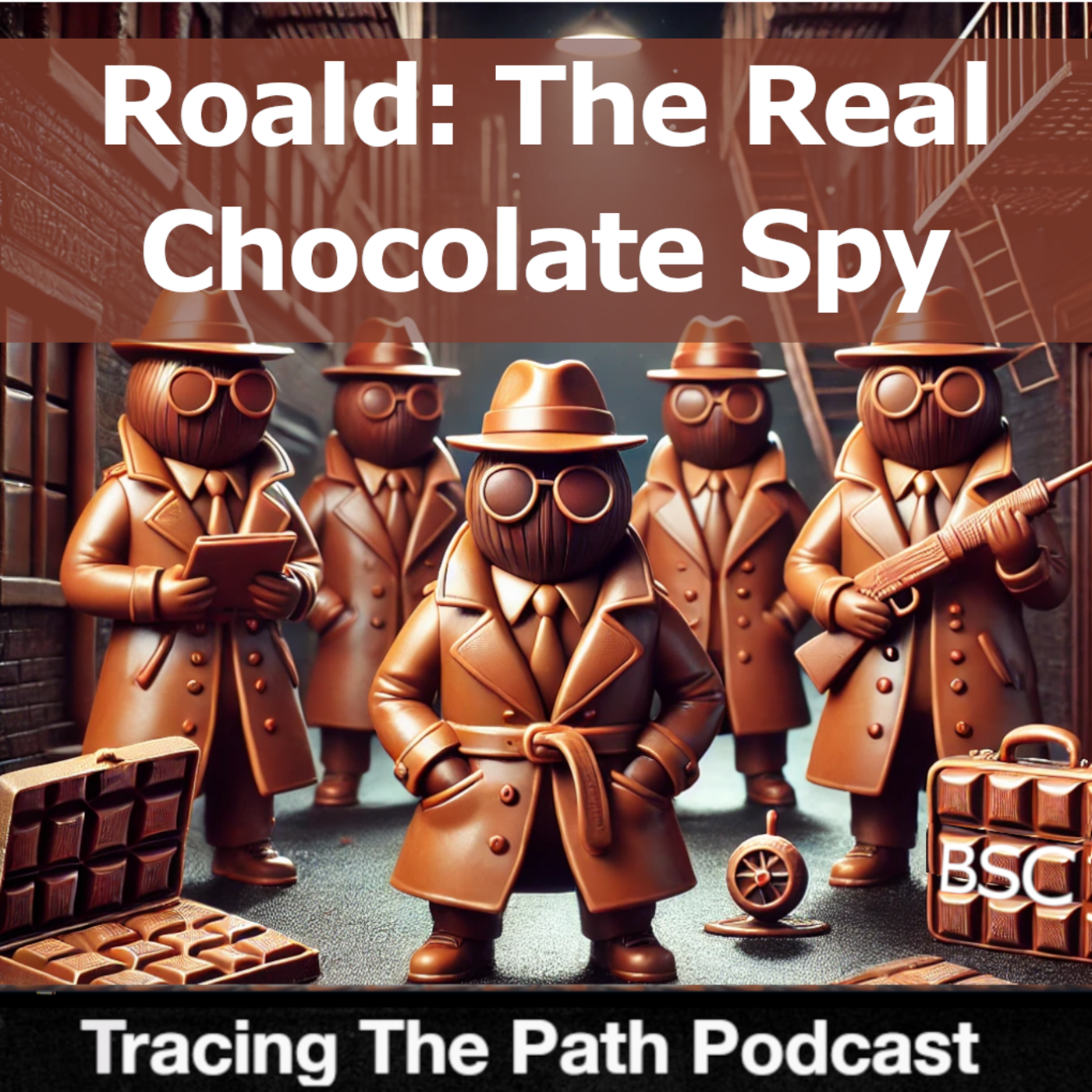 |
Roald Dahl: The Real Chocolate Spy You probably know about Charlie and the Chocolate Factory, Matilda and the Chitty Chitty Bang Bang . . . but you didn’t know this. |
 |
The Wizard of Oz’s 30 Year Miracle Beyond every American watching the Wizard Of Oz, this story has ties to Frank Lloyd Wright. |
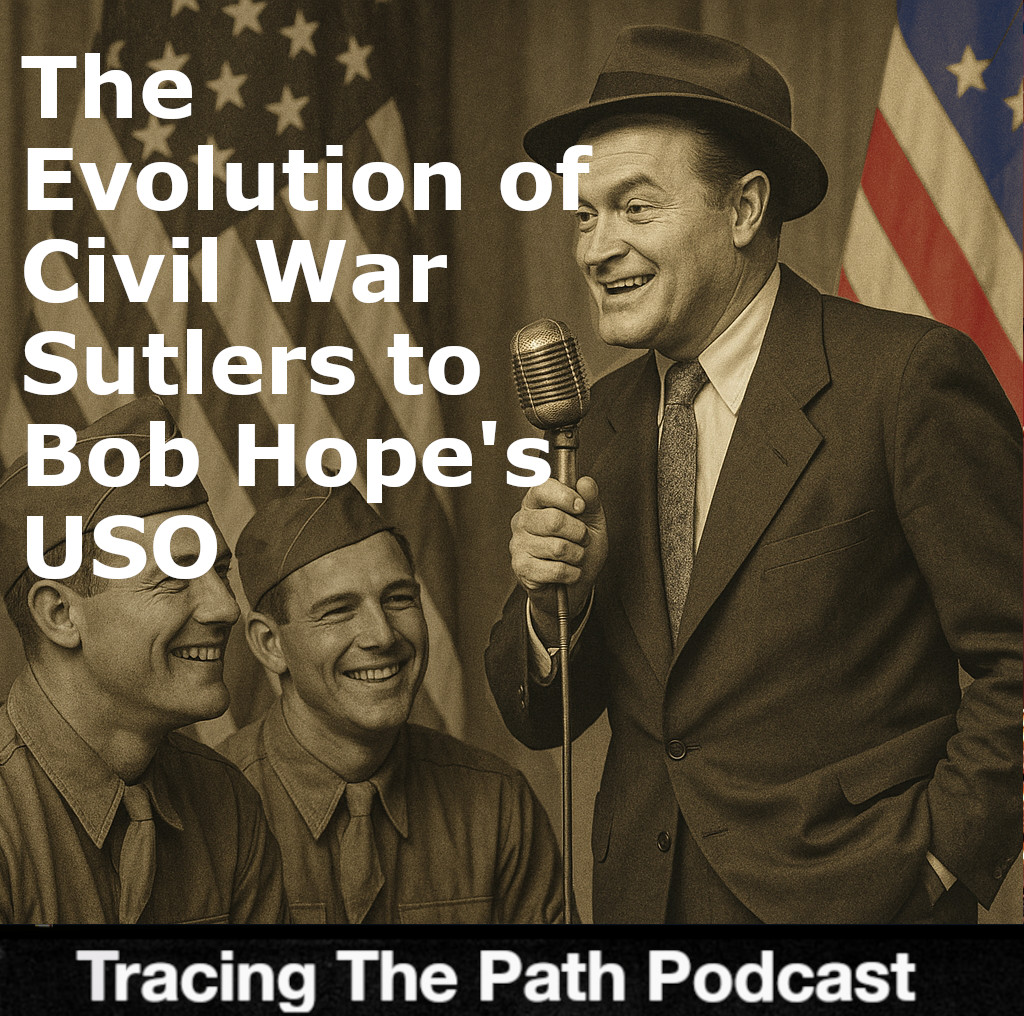 |
Evolving Civil War Sutlers into the Bob Hope’s USO Many factors went into the success of the USO. It wasn’t necessarily just big hearted celebrities |
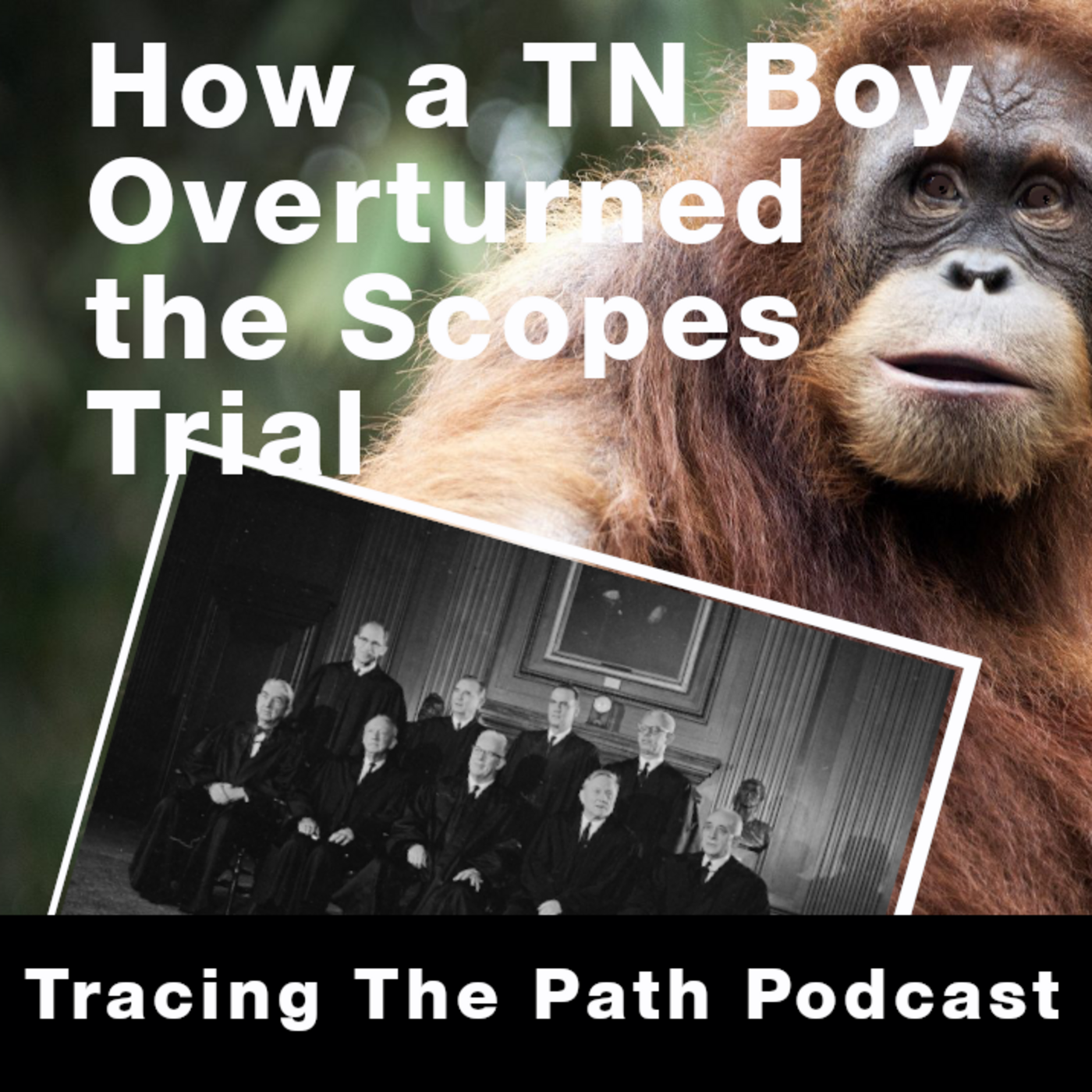 |
How a Tennessee Student Overturned the Scopes Trial Verdict Can you believe the 1925 Scopes Trial was undermined by a Tennessee high school senior? |
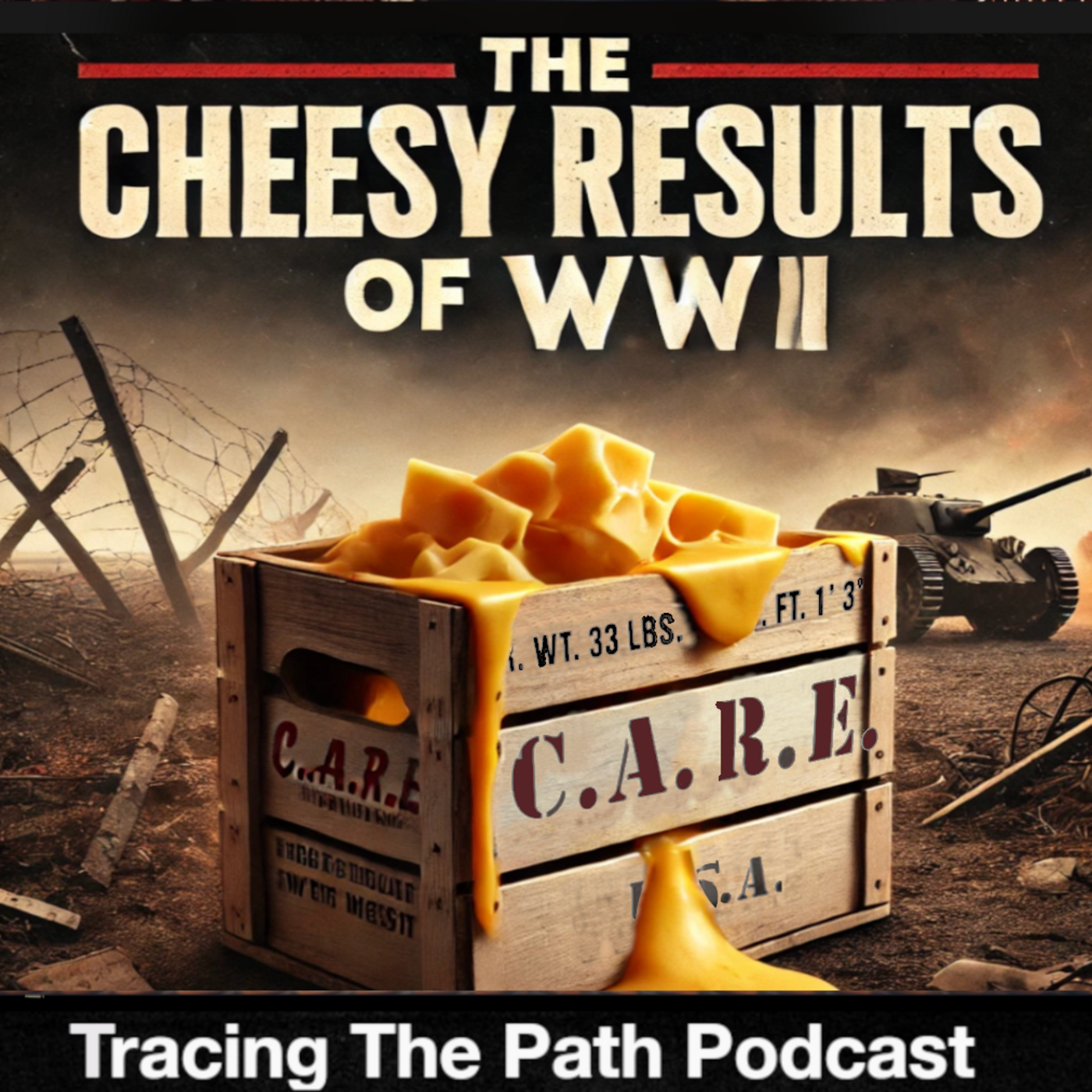 |
The Cheesy Results of WWII It all started in Wisconsin but turned quickly into a nationwide program |
SEE THE BIBLIOGRAPHY
SUBSCRIBE AND LISTEN (FOR FREE!)
RATINGS & REVIEWS
If you enjoy this podcast, please give it a rating and review.Positive ratings and reviews help bring Tracing The Path to the attention of other history lovers who may not be aware of our show.



